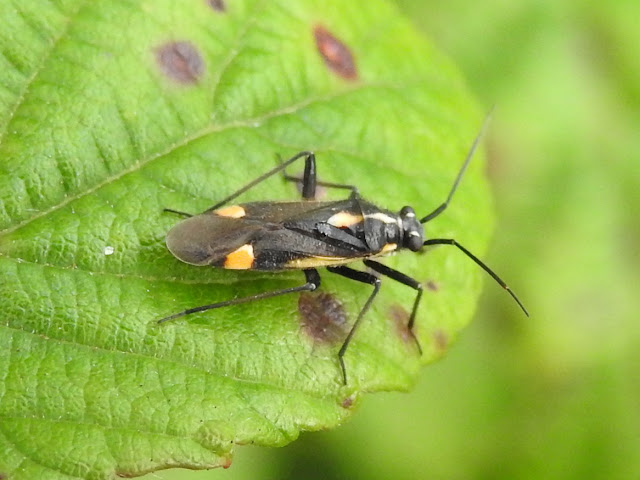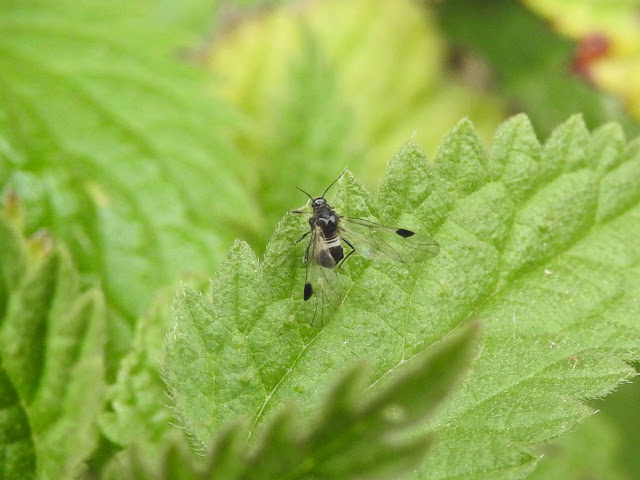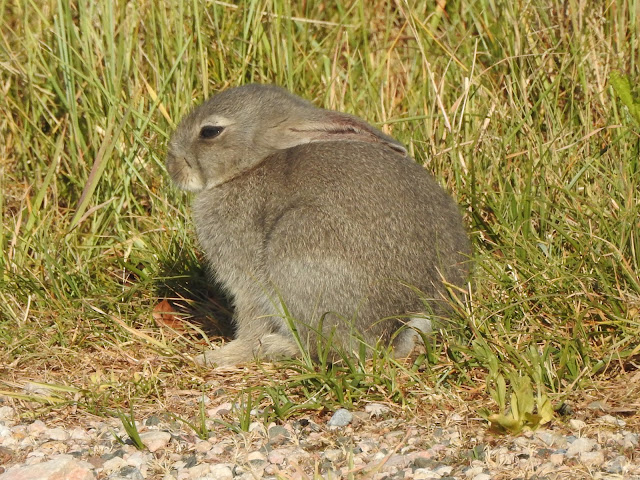A brief sleety shower made this the 18th consecutive day with precipitation and the the wintry feel was curtesy of a stiff north-northwesterly. This limited interest offshore to a dozen Great Crested Grebe, two Red-throated Diver, and the regular Great Northern Diver and drake Eider close offshore from Warren Point. A pair of Shoveler returned to Main Pond; there, on Entrance Pond and on flooded areas were single-figures of Moorhen, Water Rail, two Mallard and two Common Snipe. Around their margins were most of the six Meadow Pipit and four Pied Wagtail.
Woodland and scrub hosted 13 Long-tailed Tit, c.10 Blue Tit, five Great Tit, five Goldcrest, two Coal Tit, three Chaffinch, three Chiffchaff, two Bullfinch, two Song Thrush (one a singing ♂); one of the Firecrest and a ♂ Great Spotted Woodpecker. Some of these birds and some of the mobile finches, which included increases of up to 45 Greenfinch and c.50 Goldfinch on site, made use of the bird feeders. In more open areas were six Stonechat, six Cirl Bunting, five Skylark (on Warren Point, as usual) and a ♂ Kestrel. Also seen, a Peregrine with prey flew toward Exmouth.
High spring tides are not always the best time to count all varieties of waterbirds here and instead neap tides and mid tides ranges can be a good time to attain representative counts of wildfowl before they melt into the saltmarsh to hide, or before they depart to roost or forage elsewhere. Counts late morning included 169 Black-headed Gull (including those that departed south at dawn); 126 Turnstone (a December record); 159 Shelduck (a new site record count - see 13th December post), 76+ Dark-bellied Brent Goose, 51 Teal, 51 Common Gull, 34 Curlew, 22 Cormorant, 19 Redshank, 11 Shag (including a few seen offshore), eight Red-breasted Merganser, seven Wigeon, six Greenshank, another seven Great Crested Grebe, an adult Mediterranean Gull; the other Little Grebe that has befriended the resident Slavonian Grebe; the ♀ Scaup again on the near estuary shoreline; a Mute Swan and a Little Egret. Another ten were in close attendance around the hooves of grazing cattle in Eastdon Fields, but they weren't Cattle Egret.
The December record count of 126 Turnstone today was 'completely out of the park' with the previous record of 95 set back in 1987. Initially, this might suggest a lack of attention given to this species but there have been 325 December count since 1980, and instead the answer is a little more interesting. Turnstone is unique in its habits on this estuary compared to other waders in that the majority roost at high tide along the Starcross breakwater, located only 1,100 metres north beyond Dawlish Warren's northern recording area boundary. Three-figure counts are regular there from early-autumn to early-spring; by contrast, just a stone's throw away, over the past four decades there have been only about 24 counts of >100 Turnstone at Dawlish Warren. However, another five such counts have occurred during 2020 alone - so what's changed? The pattern of records here show that huge counts occur erratically, implying opportunism. Evidence of eutrophication (perhaps agricultural run-off or sewerage overflow) has been prevalent on the estuary since the summer with large piles of green algae piling up along the shoreline during certain states of tide and wind direction; Turnstone seem to like it and instead of pebble flipping elsewhere, a large proportion of the estuary's Turnstone descended along Dawlish Warren's neap tide waterline today, during what was a fresh northerly, and on the day after heavy rains brought lots of organic material down the river to mix up with still lots of algae. Together, these conspiring factors created, it seems, the perfect set of conditions to attract Turnstone to the site today.
 |
| Scaup - Alan Keatley |
























